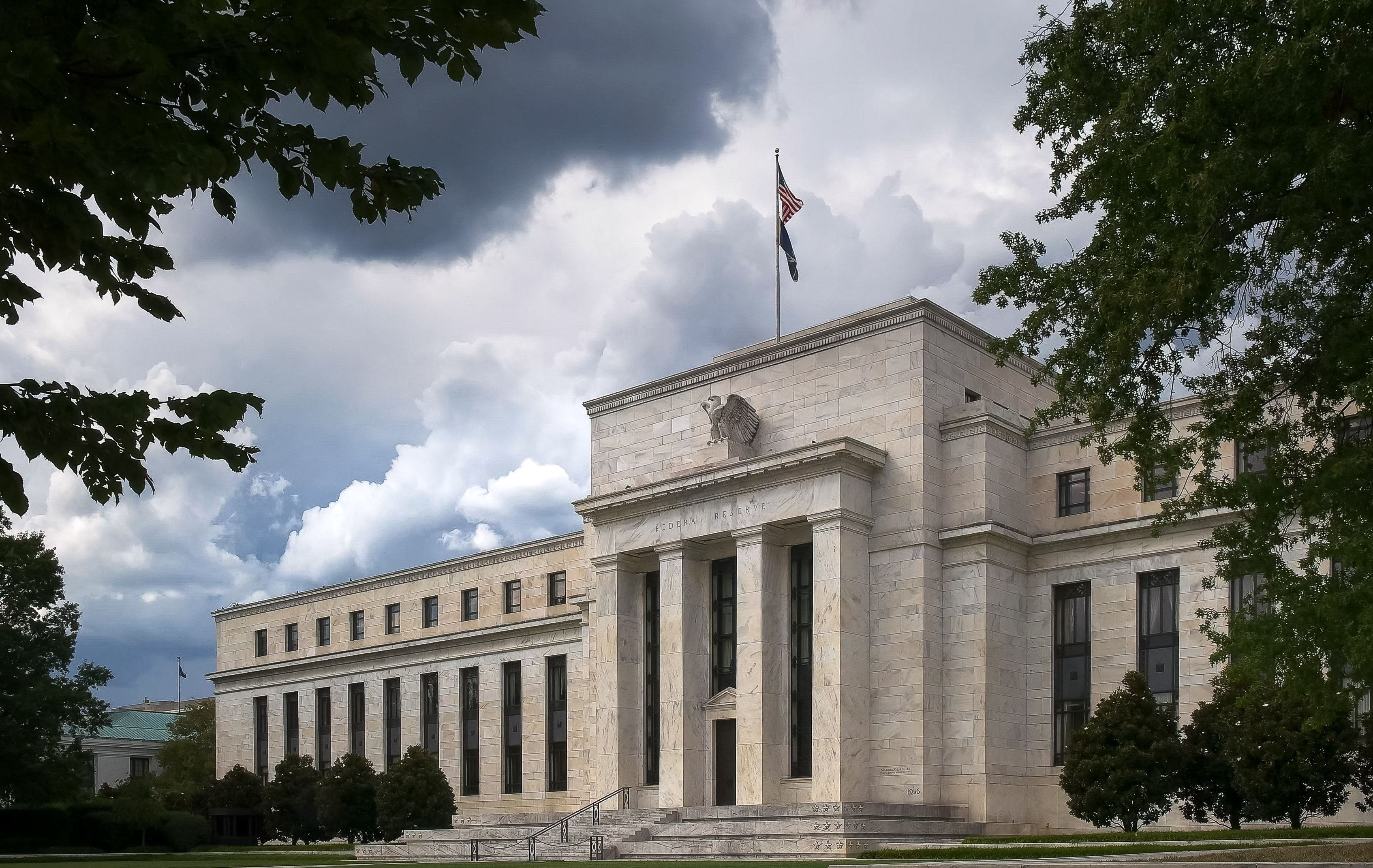Why Rising Interest Rates Won’t Kill the Bull Market
History shows that as long as consumer confidence is improving, higher bond yields won’t derail stocks.

Stock investors have become increasingly worried about how the market will react as the Federal Reserve ends its extraordinary bond-buying program. I, myself, am of the generation that began investing in the early 1980s, when the late market strategist Marty Zweig regularly cautioned, “Don’t fight the Fed.”
See Also: Could Stocks Actually Climb With Bond Yields
Not to worry, says James Paulsen, chief investment strategist at Wells Capital Management. Rising bond yields don’t snuff out bull markets. The real bull-market killer is a collapse in consumer confidence. In general, Paulsen says, bull markets don’t end when Treasury bond yields hit their lows in a given interest-rate cycle and turn up. Instead, stocks tend to continue climbing as the yield on the ten-year rises, and fall apart only when consumer confidence sours.
The Fed directly controls only short-term interest rates. But through its so-called quantitative-easing program, the Fed has bought massive amounts of government bonds—helping to hold down long-term interest rates. Now the Fed is slowing its monthly bond purchases and gradually plans to end the program as the economy gathers momentum. That should, in theory, result in higher bond yields.
From just $107.88 $24.99 for Kiplinger Personal Finance
Become a smarter, better informed investor. Subscribe from just $107.88 $24.99, plus get up to 4 Special Issues

Sign up for Kiplinger’s Free Newsletters
Profit and prosper with the best of expert advice on investing, taxes, retirement, personal finance and more - straight to your e-mail.
Profit and prosper with the best of expert advice - straight to your e-mail.
Paulsen’s notion turns conventional wisdom—not just Zweig’s—on its head. When money becomes more costly, so does everything else. Companies pay more to borrow. So do customers. That has a dampening effect on the overall economy. Why shouldn’t stocks fall when the Fed applies the brakes to the economy?
But Paulsen has the data to back up his position. In a report to clients, he looked at ten major periods since 1967 when the ten-year Treasury bond yield was rising and consumer confidence was stable or rising.
On average, Standard & Poor’s 500-stock index returned a cumulative 22.7% during these ten periods. In only one of the periods did stocks fall. That was from December 1976 to October 1978, when the S&P 500 lost 13.3%. In addition, Paulsen says, “corrections” occurred when both bond yields and confidence were rising in 1968, 1971, 1978 and 1984. (A correction is defined as a loss of 10% to 20%; a bear market is a decline of at least 20%.)
The biggest stock-market gains during one of periods of both rising yields and rising confidence occurred during the 2002–07 bull market (49%) and in the latest leg of the current bull market, which he says began in November 2012 (36.1% and still counting as of April 9.)
A rise in bond yields hasn’t choked off this bull market yet. The yield on ten-year Treasuries has climbed from a low of 1.4% in July 2012 to 2.7% today.
Paulsen says stocks can keep gaining ground because rising yields are the product of a strengthening economy. “Stock investors should stay focused on why yields are rising,” he says. “Is it primarily because of growing and broadening evidence of a stronger and more sustainable economic recovery—a confidence-boosting reason? Or, are yields rising primarily because of concerns about the economy overheating and inflation emerging and about whether the Fed is falling behind the curve—a confidence-destroying reason?”
Paulsen says that for now, “good news on the economy is good news for stocks.” He suspects a short-term selloff in stocks will occur later this year—beyond the recent drop in high-flying momentum stocks, mainly in tech and biotech.
But he thinks the bull market still has a long way to go. Americans have been becoming more optimistic since February 2009, when the Consumer Confidence Index bottomed at 25, not long before the horrific bear market that started in October 2007 would come to an end. But the index, which is calculated by the Conference Board, a nonprofit business group, was still only at 82 in March. In past recoveries, the index has typically peaked at levels of 120 or higher. “People are finally coming out of a fetal position,” Paulsen says.
Given that consumer confidence is far from previous peaks, Paulsen expects the economic recovery to last several more years: “The potential for another 50% advance in confidence before this recovery ends keeps us long-term bullish on the stock market.”
Steve Goldberg is an investment adviser in the Washington, D.C., area.
Profit and prosper with the best of Kiplinger's advice on investing, taxes, retirement, personal finance and much more. Delivered daily. Enter your email in the box and click Sign Me Up.

-
 Nasdaq Leads as Tech Stages Late-Week Comeback: Stock Market Today
Nasdaq Leads as Tech Stages Late-Week Comeback: Stock Market TodayOracle stock boosted the tech sector on Friday after the company became co-owner of TikTok's U.S. operations.
-
 Disney’s Risky Acceptance of AI Videos
Disney’s Risky Acceptance of AI VideosThe Kiplinger Letter Disney will let fans run wild with AI-generated videos of its top characters. The move highlights the uneasy partnership between AI companies and Hollywood.
-
 Ask the Editor: Itemized Deductions
Ask the Editor: Itemized DeductionsAsk the Editor In this week's Ask the Editor Q&A, Joy Taylor answers questions on itemized deductions claimed on Schedule A of Form 1040
-
 What the Rich Know About Investing That You Don't
What the Rich Know About Investing That You Don'tPeople like Warren Buffett become people like Warren Buffett by following basic rules and being disciplined. Here's how to accumulate real wealth.
-
 How to Invest for Rising Data Integrity Risk
How to Invest for Rising Data Integrity RiskAmid a broad assault on venerable institutions, President Trump has targeted agencies responsible for data critical to markets. How should investors respond?
-
 What Tariffs Mean for Your Sector Exposure
What Tariffs Mean for Your Sector ExposureNew, higher and changing tariffs will ripple through the economy and into share prices for many quarters to come.
-
 How to Invest for Fall Rate Cuts by the Fed
How to Invest for Fall Rate Cuts by the FedThe probability the Fed cuts interest rates by 25 basis points in October is now greater than 90%.
-
 Are Buffett and Berkshire About to Bail on Kraft Heinz Stock?
Are Buffett and Berkshire About to Bail on Kraft Heinz Stock?Warren Buffett and Berkshire Hathaway own a lot of Kraft Heinz stock, so what happens when they decide to sell KHC?
-
 How the Stock Market Performed in the First 6 Months of Trump's Second Term
How the Stock Market Performed in the First 6 Months of Trump's Second TermSix months after President Donald Trump's inauguration, take a look at how the stock market has performed.
-
 Fed Leaves Rates Unchanged: What the Experts Are Saying
Fed Leaves Rates Unchanged: What the Experts Are SayingFederal Reserve As widely expected, the Federal Open Market Committee took a 'wait-and-see' approach toward borrowing costs.
-
 Fed Sees Fewer Rate Cuts in 2025: What the Experts Are Saying
Fed Sees Fewer Rate Cuts in 2025: What the Experts Are SayingFederal Reserve The Federal Reserve cut interest rates as expected, but the future path of borrowing costs became more opaque.